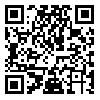Volume 7, Issue 2 (5-2025)
pbp 2025, 7(2): 0-0 |
Back to browse issues page
Download citation:
BibTeX | RIS | EndNote | Medlars | ProCite | Reference Manager | RefWorks
Send citation to:



BibTeX | RIS | EndNote | Medlars | ProCite | Reference Manager | RefWorks
Send citation to:
Behzadi F, Roosta Y. A Review of Medicinal Plants Effective Against Iron Deficiency Anaemia. pbp 2025; 7 (2)
URL: http://pbp.medilam.ac.ir/article-1-241-en.html
URL: http://pbp.medilam.ac.ir/article-1-241-en.html
1- Department of Internal Medicine, School of Medicine, Urmia University of Medical Sciences, Urmia, Iran
2- Department of Internal Medicine, School of Medicine, Urmia University of Medical Sciences, Urmia, Iran ,yroosta@gmail.com
2- Department of Internal Medicine, School of Medicine, Urmia University of Medical Sciences, Urmia, Iran ,
Abstract: (813 Views)
Objective: Iron deficiency anaemia is one of the most common forms of anaemia worldwide, resulting from a decrease in the body's iron stores and an inability to produce adequate haemoglobin. This condition can lead to fatigue, weakness, and a reduced ability to combat infections. Treatment and prevention primarily involve dietary adjustments and iron supplementation. The aim of this review is to identify medicinal plants traditionally used to treat iron deficiency anaemia.
Method: To investigate the native Iranian medicinal plants effective against iron deficiency anaemia, the research problem and objectives were first defined. A comprehensive search was then conducted using scientific databases such as PubMed, Google Scholar, Scopus, and Web of Science, along with specialised sources like reference books and encyclopaedias. Keywords used included "native Iranian medicinal plants," "iron deficiency anaemia," and "active compounds in medicinal plants."
Results: The review identified that medicinal plants such as beetroot, pennyroyal, garlic, saffron, mint, radish, plum, turmeric, hawthorn, and rosemary are traditionally used in the treatment of iron deficiency anaemia.
Conclusion: The use of medicinal plants as natural supplements in the treatment of iron deficiency anaemia can help improve haemoglobin levels and alleviate the symptoms of this condition. Identifying and utilising these plants, particularly within the framework of traditional medicine, can play a significant role in the management and prevention of iron deficiency anaemia.

Method: To investigate the native Iranian medicinal plants effective against iron deficiency anaemia, the research problem and objectives were first defined. A comprehensive search was then conducted using scientific databases such as PubMed, Google Scholar, Scopus, and Web of Science, along with specialised sources like reference books and encyclopaedias. Keywords used included "native Iranian medicinal plants," "iron deficiency anaemia," and "active compounds in medicinal plants."
Results: The review identified that medicinal plants such as beetroot, pennyroyal, garlic, saffron, mint, radish, plum, turmeric, hawthorn, and rosemary are traditionally used in the treatment of iron deficiency anaemia.
Conclusion: The use of medicinal plants as natural supplements in the treatment of iron deficiency anaemia can help improve haemoglobin levels and alleviate the symptoms of this condition. Identifying and utilising these plants, particularly within the framework of traditional medicine, can play a significant role in the management and prevention of iron deficiency anaemia.

Received: 2024/07/2 | Accepted: 2024/08/24 | Published: 2025/02/28
Send email to the article author
| Rights and permissions | |
 |
This work is licensed under a Creative Commons Attribution-NonCommercial 4.0 International License. |




